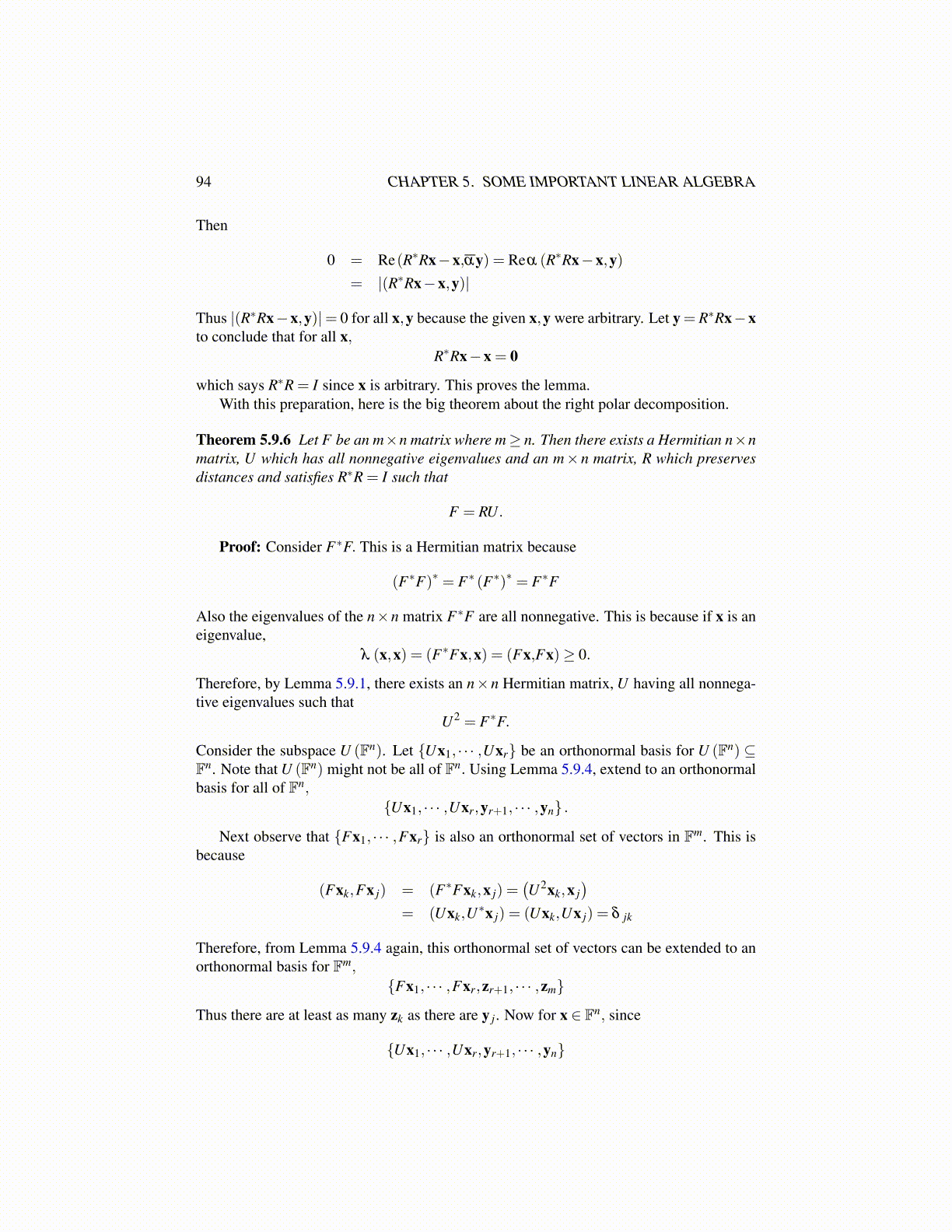
94 CHAPTER 5. SOME IMPORTANT LINEAR ALGEBRA
Then
0 = Re(R∗Rx−x,αy) = Reα (R∗Rx−x,y)= |(R∗Rx−x,y)|
Thus |(R∗Rx−x,y)|= 0 for all x,y because the given x,y were arbitrary. Let y = R∗Rx−xto conclude that for all x,
R∗Rx−x = 0
which says R∗R = I since x is arbitrary. This proves the lemma.With this preparation, here is the big theorem about the right polar decomposition.
Theorem 5.9.6 Let F be an m×n matrix where m≥ n. Then there exists a Hermitian n×nmatrix, U which has all nonnegative eigenvalues and an m× n matrix, R which preservesdistances and satisfies R∗R = I such that
F = RU.
Proof: Consider F∗F. This is a Hermitian matrix because
(F∗F)∗ = F∗ (F∗)∗ = F∗F
Also the eigenvalues of the n×n matrix F∗F are all nonnegative. This is because if x is aneigenvalue,
λ (x,x) = (F∗Fx,x) = (Fx,Fx)≥ 0.
Therefore, by Lemma 5.9.1, there exists an n×n Hermitian matrix, U having all nonnega-tive eigenvalues such that
U2 = F∗F.
Consider the subspace U (Fn). Let {Ux1, · · · ,Uxr} be an orthonormal basis for U (Fn) ⊆Fn. Note that U (Fn) might not be all of Fn. Using Lemma 5.9.4, extend to an orthonormalbasis for all of Fn,
{Ux1, · · · ,Uxr,yr+1, · · · ,yn} .
Next observe that {Fx1, · · · ,Fxr} is also an orthonormal set of vectors in Fm. This isbecause
(Fxk,Fx j) = (F∗Fxk,x j) =(U2xk,x j
)= (Uxk,U∗x j) = (Uxk,Ux j) = δ jk
Therefore, from Lemma 5.9.4 again, this orthonormal set of vectors can be extended to anorthonormal basis for Fm,
{Fx1, · · · ,Fxr,zr+1, · · · ,zm}
Thus there are at least as many zk as there are y j. Now for x ∈ Fn, since
{Ux1, · · · ,Uxr,yr+1, · · · ,yn}